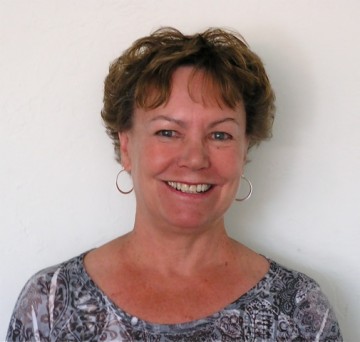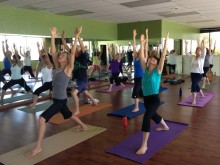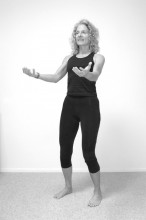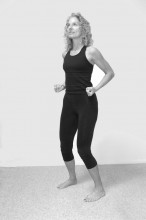
We are pleased to welcome guest blogger Barbara Sherman, RYT 200. Barbara is a LifeForce Yoga Practitioner, Level 2. She lives in Oro Valley, Arizona, where she teaches community classes, offers private yoga sessions and is adjunct faculty at Pima Community College, teaching yoga in the Fitness and Wellness Department. Barbara holds a Masters in Movement from Wesleyan University, which included studies in anatomy and kinesiology (anatomy in motion). Visit Barbara’s website to learn more.
A large class in a big fitness center was one of my first teaching positions in Arizona and it presented me with the stressful challenge of satisfying conflicting student needs and expectations. Seasoned students wanted to move into poses quickly with minimal verbal direction, yet their alignment was often poor and their breathing irregular. Beginners were eager, but needed more verbal description and hands on assistance. Older students usually wanted a more relaxed pace with simpler poses. Younger ones wanted a more vigorous class with more challenges. What they had in common was anxiety. The students were anxious to please and so was I.
After LifeForce Yoga training with Amy Weintraub, I began to incorporate some of her teachings to create a more satisfying yoga practice for everyone. In the beginning of each class I ask students to sit quietly and notice their breath without judgment. While sitting in sukasana and observing their breath the students become quiet and more centered. Then we chant Om to bring our hearts and minds into the practice. During each class I frequently say: “As my teacher Amy says, let go of judgments and anything no longer serving you” or “Yoga is always a practice, never a perfect”. Students are given permission to do what they can do and let go of anything that is not right for them. It helps if I briefly demonstrate or describe the more physically challenging aspect of the asana and then settle into the “modification.” If there are more advanced students present, I invite them to express the asana to its fullest. This is in keeping with the poetic concept of “no forcing and no holding back”, which I refer to frequently.
By integrating my understanding of Lifeforce Yoga, particularly its focus on self-awareness without judgment, into my teaching, yoga became much more than a physical practice for those in my classes. For many I know it is a healing experience, as they have reported various ways in which their bodies have changed for the better with less pain. Others have told me that they enjoy the more spiritual side of yoga, which comes through in a LifeForce Yoga oriented class. Still others have said how much they appreciate being able to do what they can, with permission to opt out of a posture if necessary for their own wellbeing. The students have become less anxious about “getting it right” on the mat, and they tell me that the posture of self-acceptance is one they are adopting off the mat, too.
Sensing the breath in the beginning of class leads naturally into sensing the body. Throughout the class I remind students to sense “deeply” into different parts of the body. I invite them to cultivate self-observation without judgment. To help achieve this objective I turned the orientation of the class away from the mirrors. Now students are not always watching themselves in the mirror, with either a narcissistic or an overly critical eye, rather they are more likely to turn inward. Through this way of practicing they began to develop kinesthetic awareness. The result is that In the midst of a place where so much emphasis is on one’s outer appearance, the yoga studio on the second floor of the gym has become an oasis where inner experience is more important.

 Sometimes I introduce more specific pranayamas at the beginning of class. Breathing practices such as 3-part breath, alternate nostril breath, or bellows breath (bastrika), put everyone on a level playing field, since no one ever masters these pranayamas. Toward the middle of class we may also do “Breath of Joy” or “Pulling Prana,” as a way of bringing everyone together with a common energy. This is especially effective if students have been struggling a bit with a sequence or a more challenging balance pose or standing asana.
Sometimes I introduce more specific pranayamas at the beginning of class. Breathing practices such as 3-part breath, alternate nostril breath, or bellows breath (bastrika), put everyone on a level playing field, since no one ever masters these pranayamas. Toward the middle of class we may also do “Breath of Joy” or “Pulling Prana,” as a way of bringing everyone together with a common energy. This is especially effective if students have been struggling a bit with a sequence or a more challenging balance pose or standing asana.
I guide ujai breath, as a way of creating more stamina in an asana and to support moving from one pose to another. Even if students let this breath go, and I suspect most everyone does, it teaches their bodies to adopt a deeper and slower breathing pattern. As students stop holding their breath, there is less gasping and groaning and more even breathing heard around the room.
Students appear to be less anxious now, and certainly I am less anxious than I was when I first encountered this class setting. There is the feeling that we are all one in the practice. In the last 5 minutes when everyone is in savasana, there is a feeling of peacefulness in the room. This asana too, I tell them is always a practice. Even the more restless students, who find it difficult to lie still, become less jittery as they observe their breath and drop inward. It is rare now for someone to leave before savasana as was previously the case. This is a testament to the efficacy of LifeForce Yoga to transform a formerly body-oriented group to one much more attuned to cultivating a healthier mind/body relationship. I believe this holistic approach to yoga, with time and tapas (willful practice), brings us (students and teachers alike) closer to an awareness of who we truly are.
To attend a LifeForce Yoga Healing Institute Workshop or Training please visit our Calendar of Events. We add new events regularly so check back for updates!
Congratulations; beautiful article which clearly reflects what had been the wonderful process of Barb’s Yoga classes at Platinum. She was an exquisite yoga instructor there for many years and took care of all of us regardless of our level of practice.
Great article Mom! You describe so clearly and eloquently what I try to embody and practice as a teacher. I’m so happy that you and I both share this deep respect and love of yoga and continue to expand and broaden our depth of knowledge so we can share with others. You inspire me. Namaste! Anne